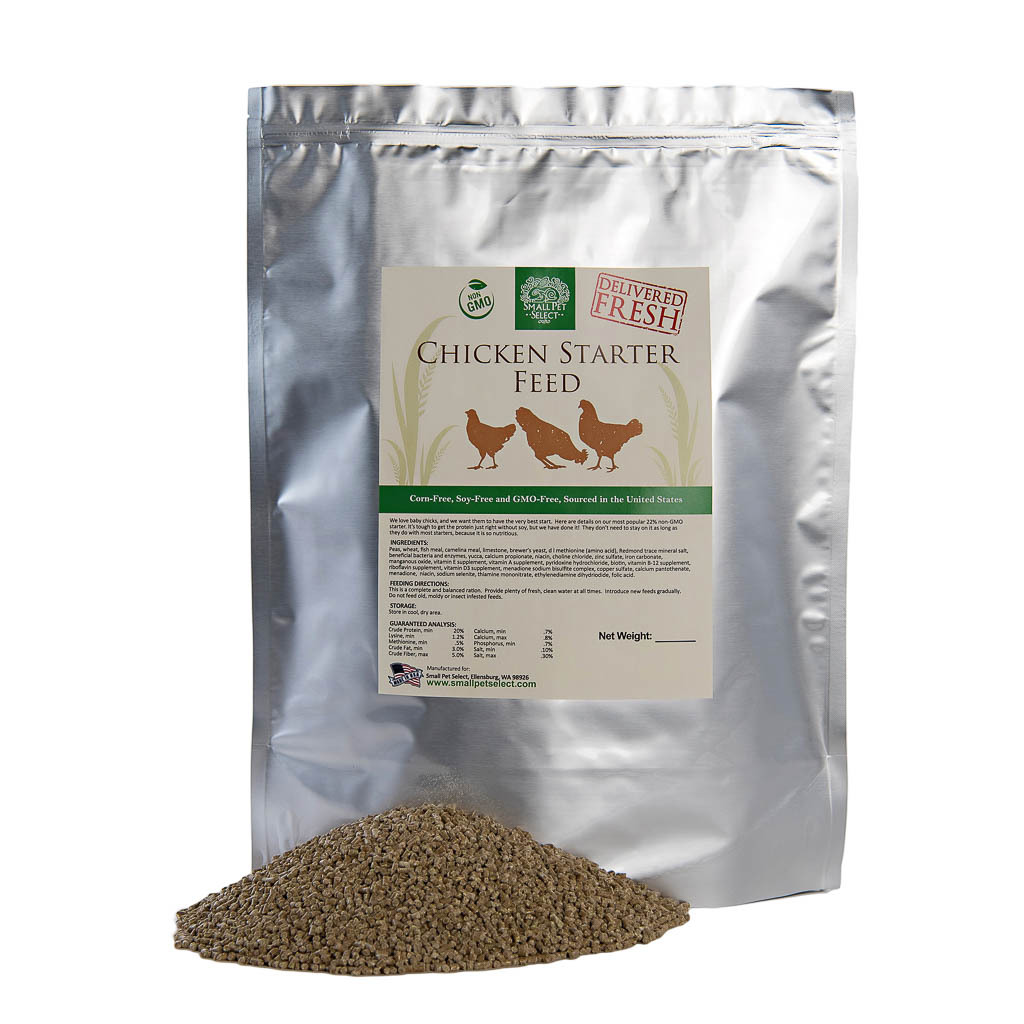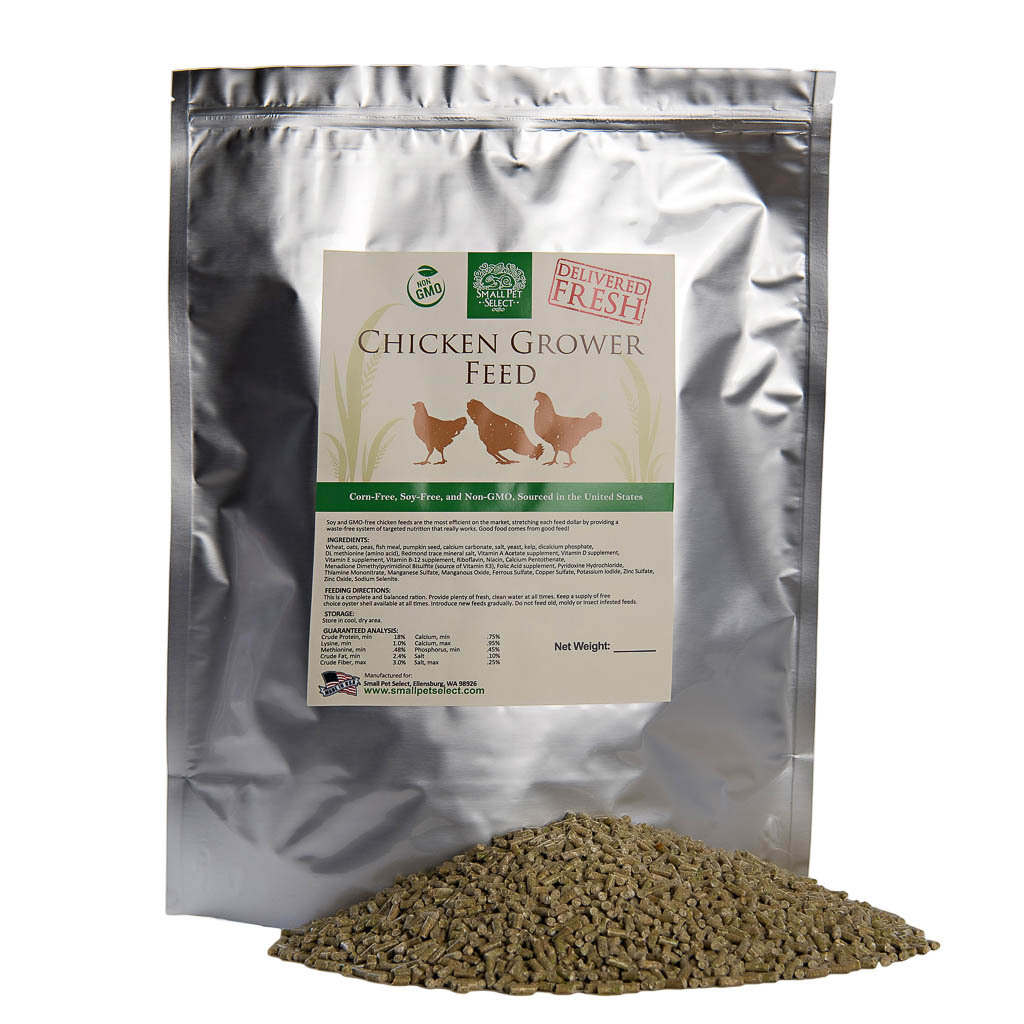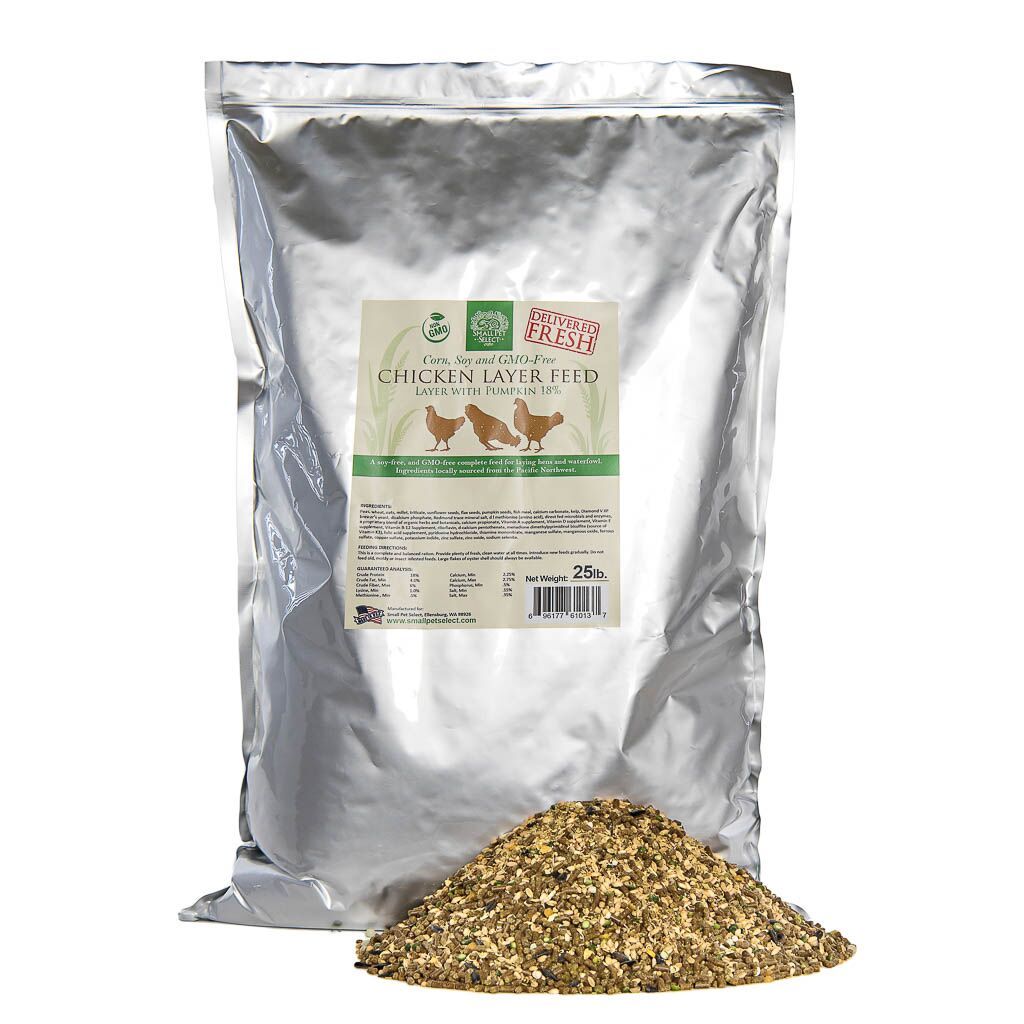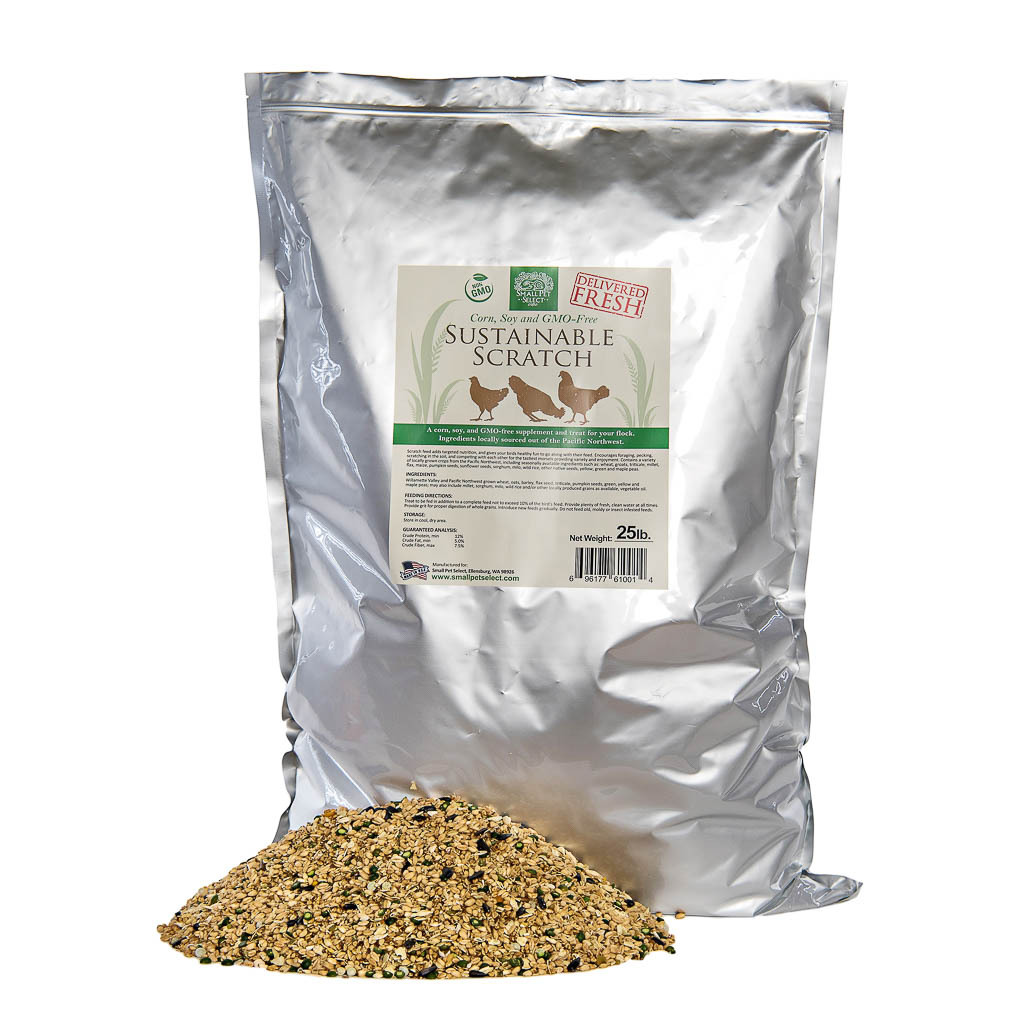When the weather outside is frightful, us hoomans can simply cuddle up by a cozy fireplace with a mug of hot cocoa. Unfortunately, our feathered friends have to suck it up and deal with the frosty temps... unless their poultry pawrents bring them inside on the most frigid of nights so their footsies don’t get cold… like I do (409 is my best friend). Even when us hoomans do venture into the cold, we can bundle up in wooly sweaters, hats, gloves and scarves to prevent that most evil of wintery misfortunes… frostbite. And can chickens get frostbite, too? The answer? Yes.
Because a chicken's extremities don’t easily accommodate mittens and most chickens don’t appreciate hats or sweaters, instead of outfitting your feathery fashionistas in the latest of cold weather couture, here are some tips on how to diagnose, or better yet, avoid frostbite altogether.

What IS Frostbite?
First of all, what is this malady? Frostbite occurs when skin is exposed to extreme cold or frigid wind. Fluid in the cells freeze, resulting in blood clots, oxygen deprivation and tissue damage. Frostbitten skin will turn very pale, become numb and lose all feeling. In extreme cases, lack of blood flow will essentially kill the skin, turning it black and necrotic. Chickens have the luxury of a downy, feathered coat that protects most of their delicate skin; but, exposed areas like combs, wattles and feet are still at risk.
Does My Chicken Have Frostbite?
What are some telltale signs of frostbite?
- As mentioned before, blackened skin
- Swelling
- Skin is very cold or hard to the touch
- Blisters
- Limping
- Loss of appetite, listlessness
During the colder months, chickens can actually restrict blood flow to their combs, feet and wattles to conserve body heat. Unfortunately, this results in a higher risk for frostbite. You can possibly avoid this by considering extra heat sources in the coop.
Chickens that have been exposed to extreme cold can show signs of frostbite. Take a close look at their combs or wattles: are the tips black and stiff? They have suffered frostbite. Healthy combs and wattles should be dark pink and flexible; frostbitten ones will be black, cold and hard. Roosters have the highest risk because of their gorgeous, extravagant combs.
Also, some chickens just really love to take leisurely strolls in deep snow. These snow bums tend to get frostbite on their feetsies which result in blackened and swollen digits.
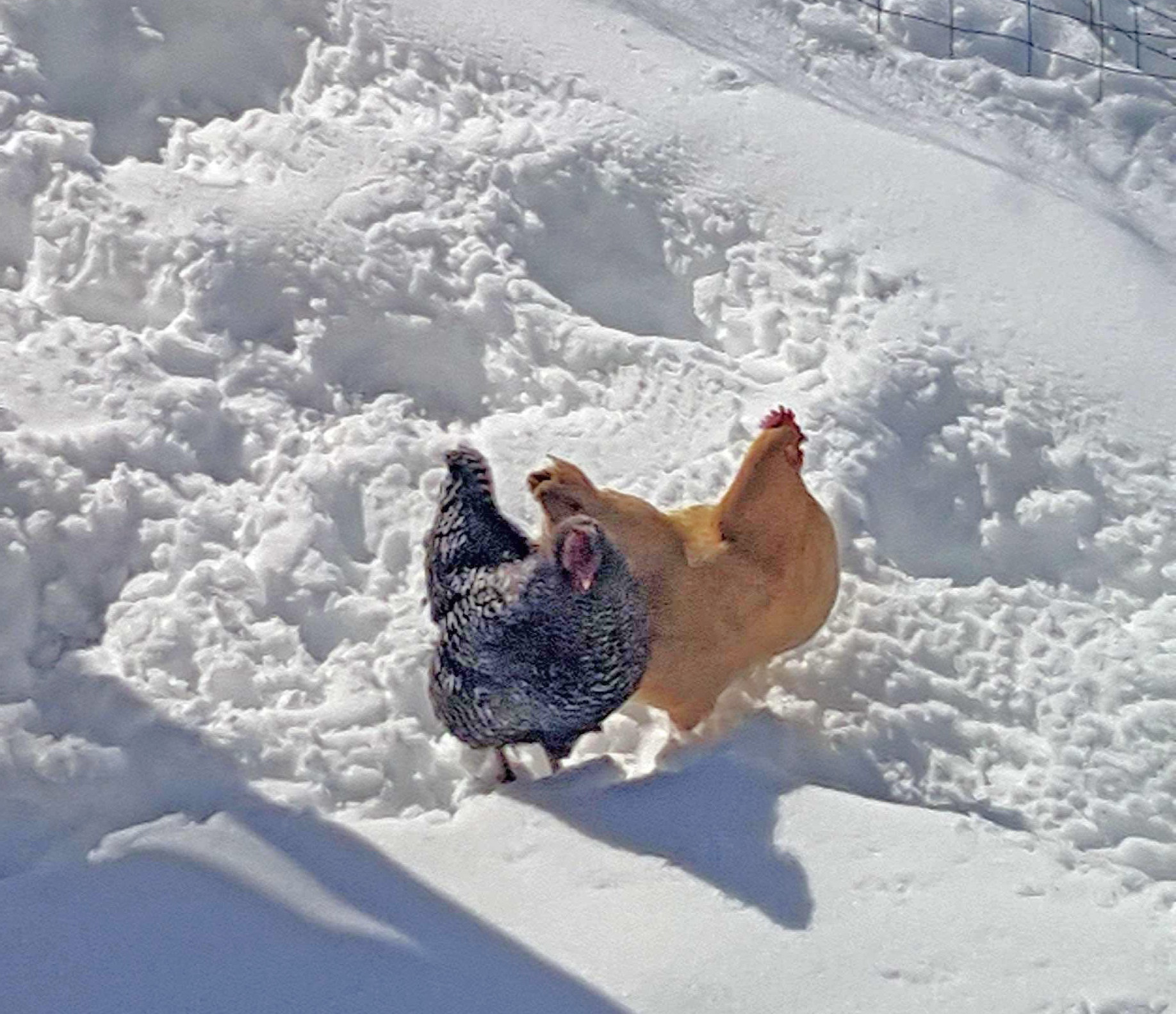
A couple of (fool)hardy chickens going on a wintery walk
So, What Do I Do?
If you suspect you have a chicken suffering from frostbite:
- Move the chicken into a warmer location immediately.
- Gradually warm affected area(s) with lukewarm water. Never rub the skin or introduce it to hot water immediately!
- Provide hydration with added electrolytes.
- Keep the chicken in the warmer climate until outside temps even out.
- Never remove deadened skin! It may be protecting healthy skin underneath. Allow it to fall off naturally.
- Keep affected areas clean.
- Always monitor for signs of infection. Contact an avian vet immediately if you suspect infection.
How Can I Prevent Frostbite?
So, what can you do to prevent your backyard buddies from suffering from frostbite?
1. If you live in a cold climate, be sure to keep hardier birds like Wyandottes, Rhode Island Reds, New Hampshire Reds, Barred Rocks, Delawares and Brahmas. These chickens have smaller combs and wattles and, thus, less chance of frostbite on exposed skin. That said, these hardy hens can still succumb to winter weather in extreme cases.
2. Offer a high protein and high fat diet to keep chickens’ internal oven cooking. Mixing high quality chicken scratch with their usual feed is a perfect menu for winter months.
3. Provide a deep layer of pine shavings in the roost. Your chickens can snuggle in the insulating layers which trap body heat.
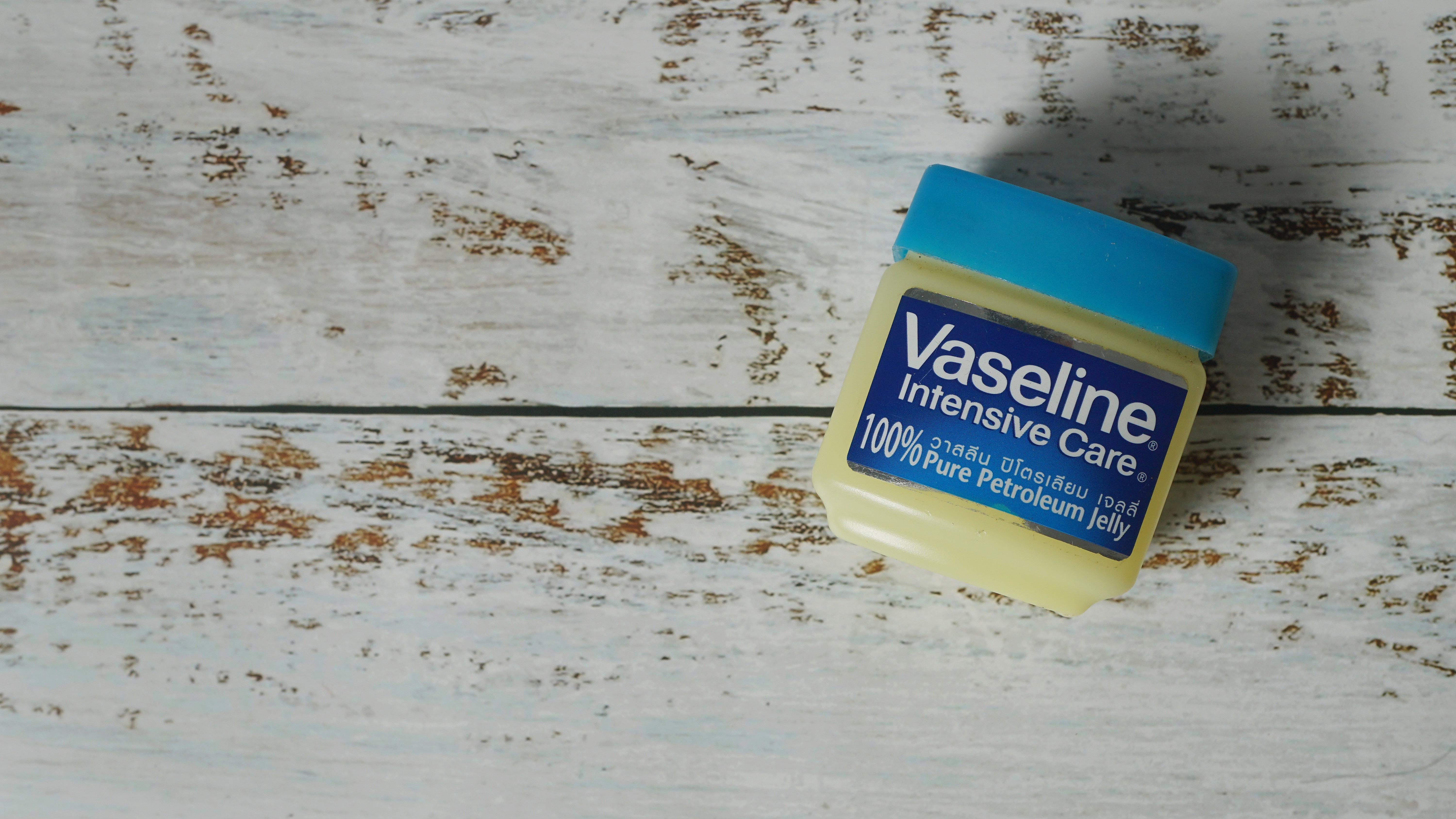
The easiest method of protecting exposed skin is cover it with a soothing and protective lubricant like Vaseline. I always keep a huge jar of Vaseline on hand and slather it on my hens’ combs and wattles when the temps plummet. It’s a cheap and simple product that can stave off frostbite.
4. Insulate your coop. I used Rigid Foam Insulation. It’s inexpensive and readily available at most home improvement stores. Rigid insulation provides relief from extreme cold and extreme heat.
5. Don’t allow your chickens to leave the coop in extreme conditions. Simply put, use your common sense. Chickens naturally like to roam and scratch. But, if the temperatures are bone-chilling cold, lock your ladies up! They will quickly lose interest in searching for goodies and simply huddle together on the roost.
Prevention is always the best way to treat frostbite!
Cold weather is inevitable. Frostbite is preventable. Take care of your feathered friends and they will reward you with lots of yummy eggs when winter thaws!




